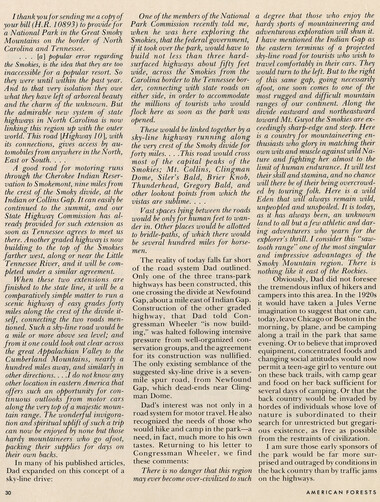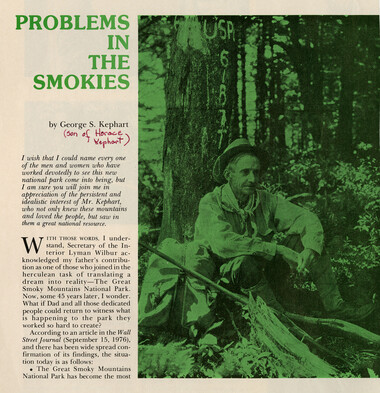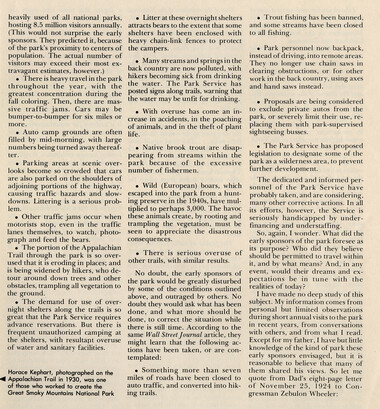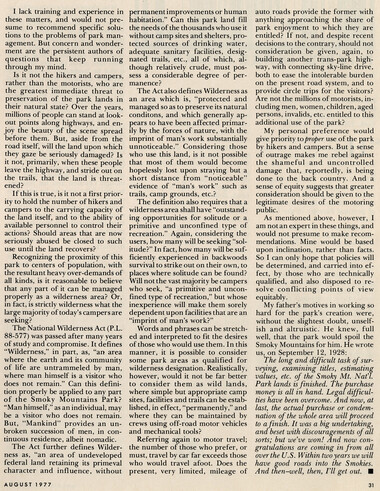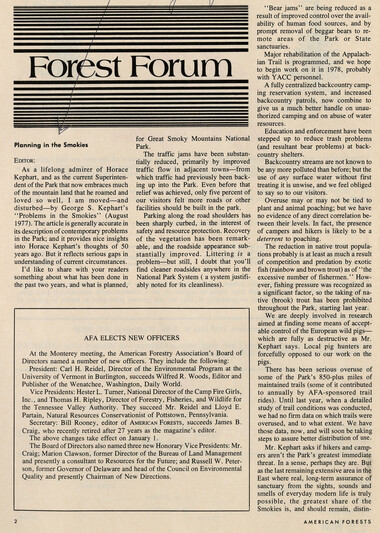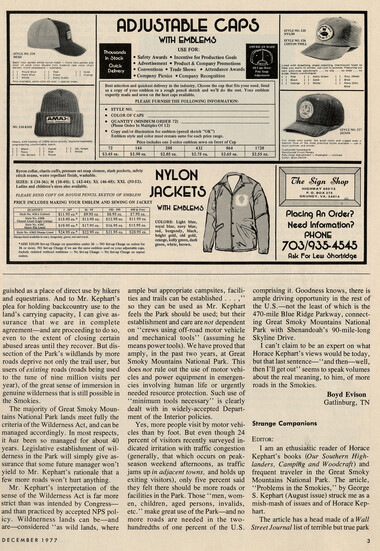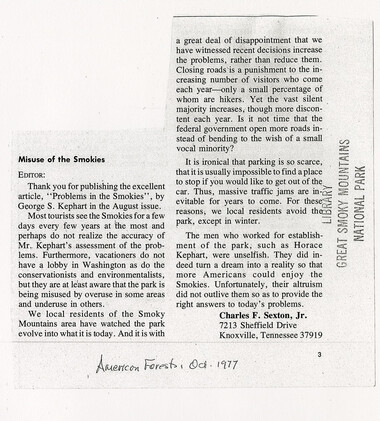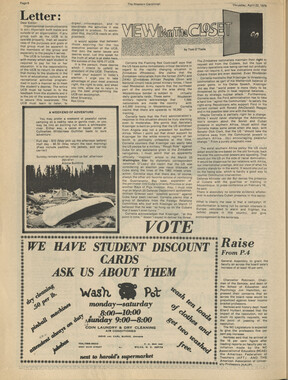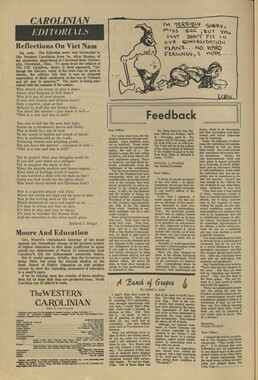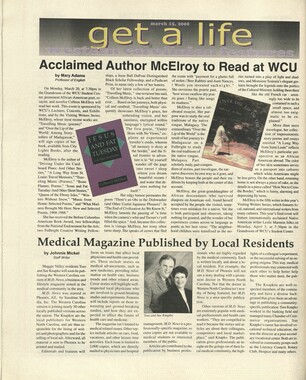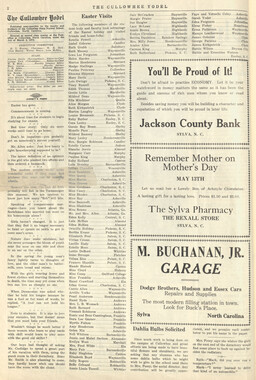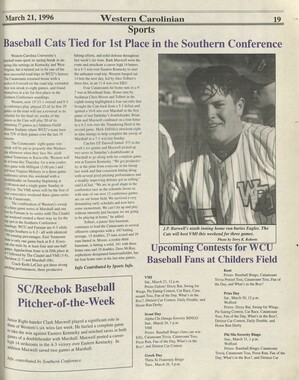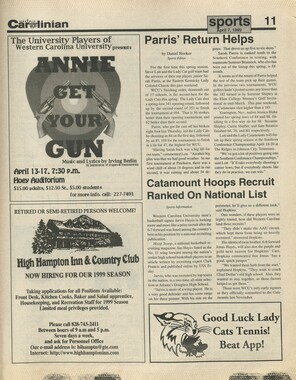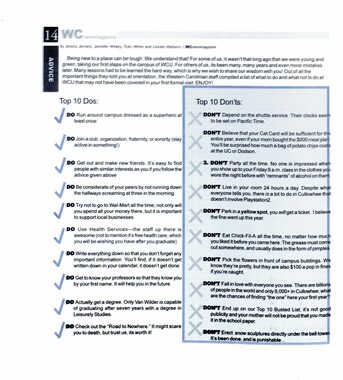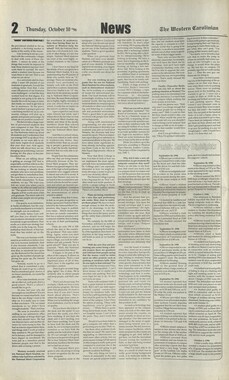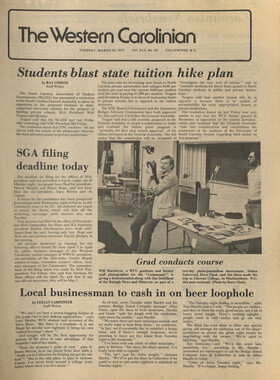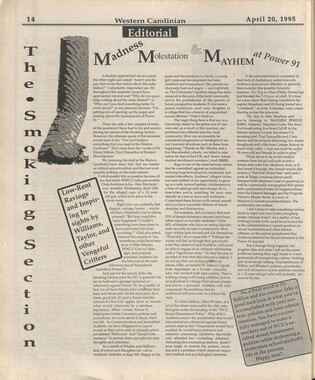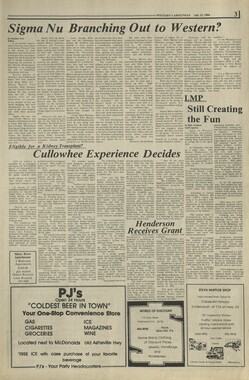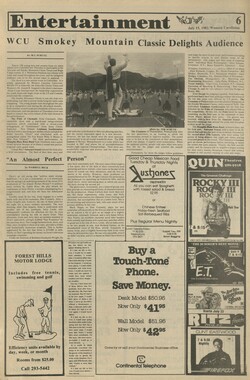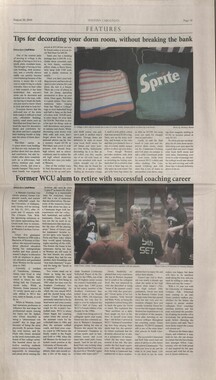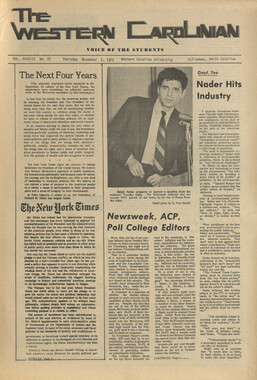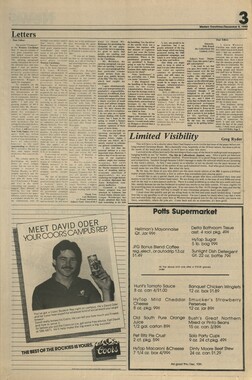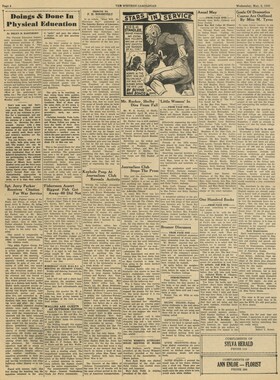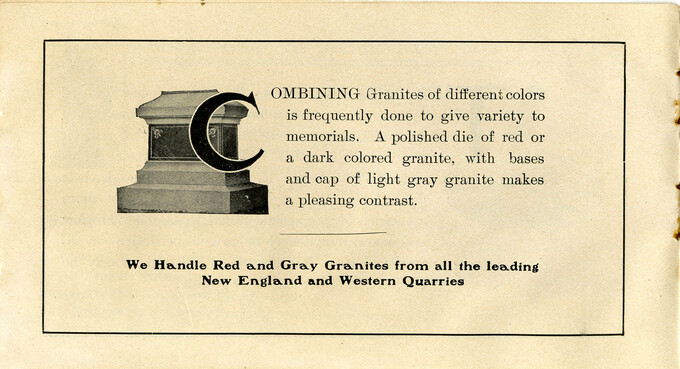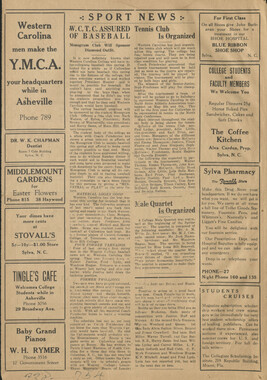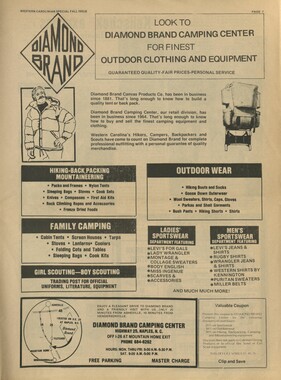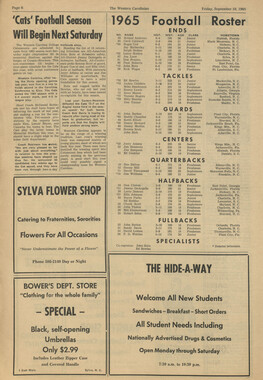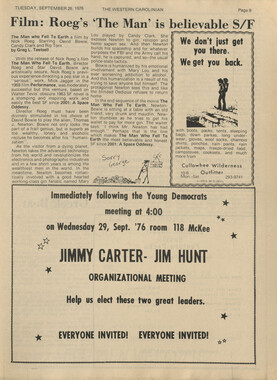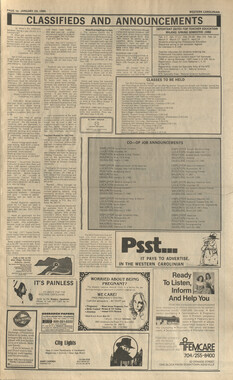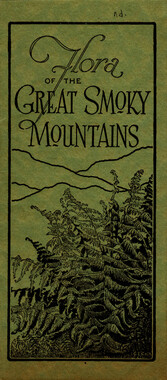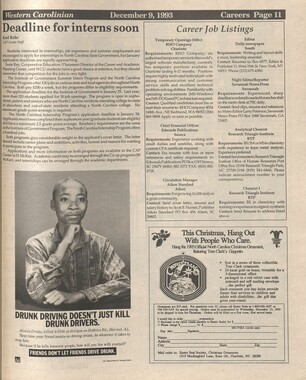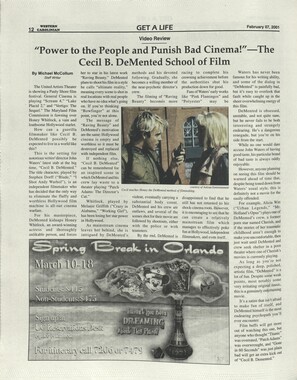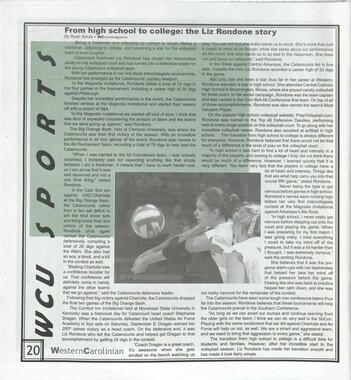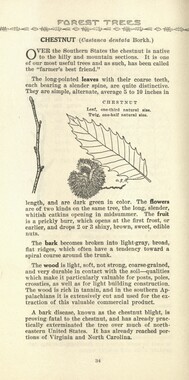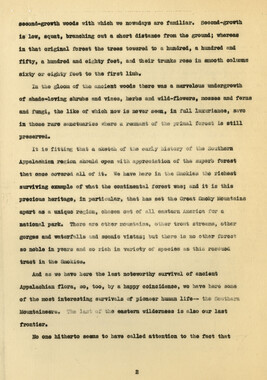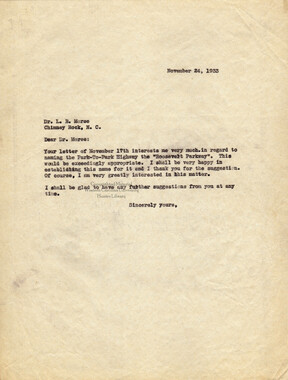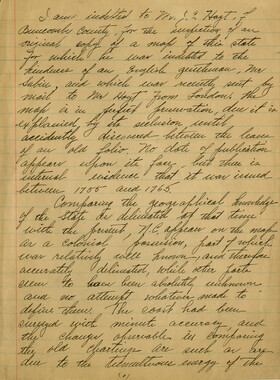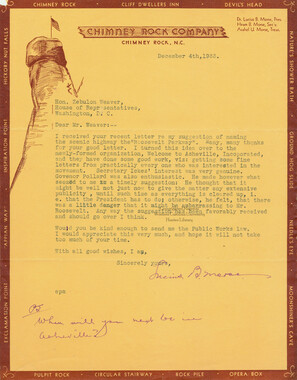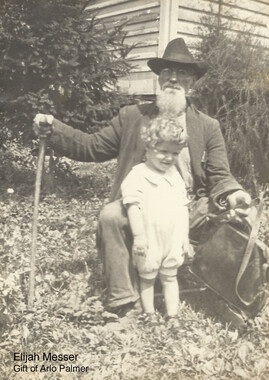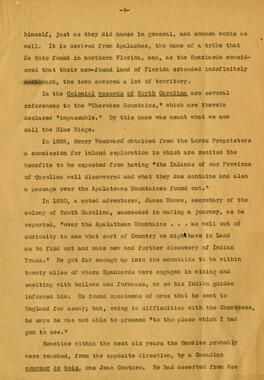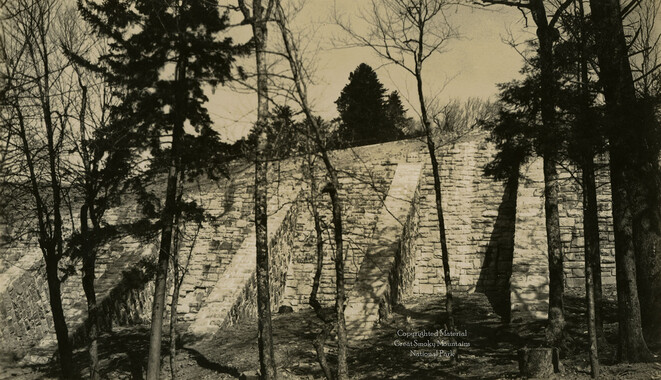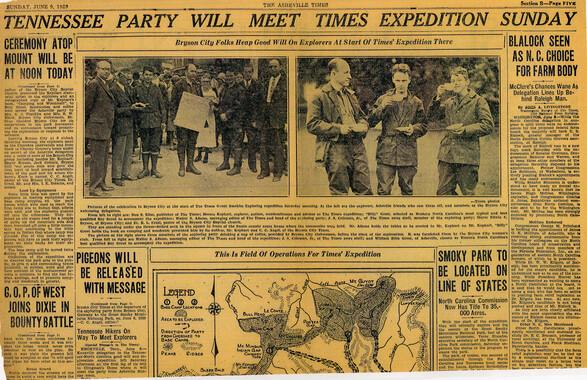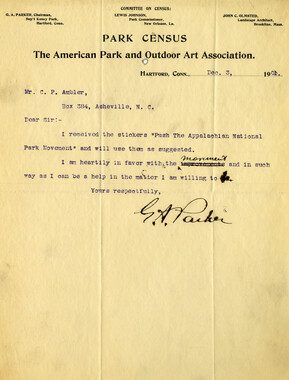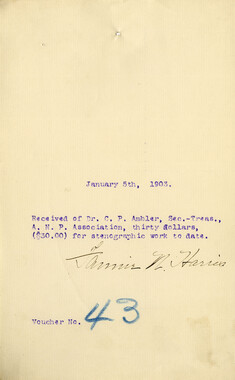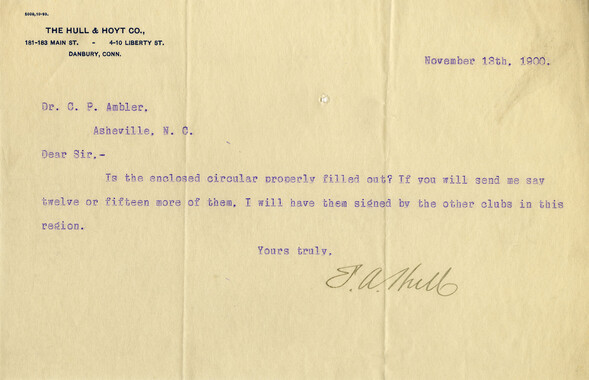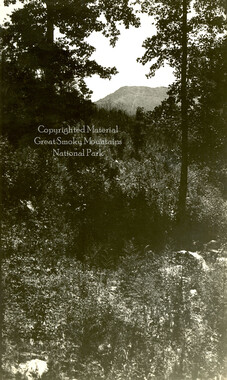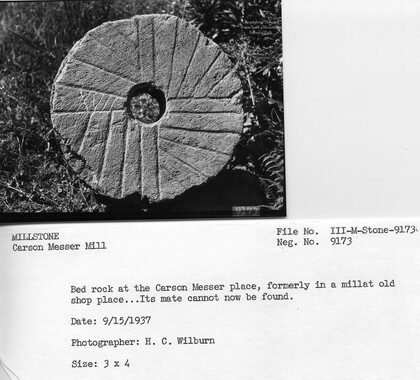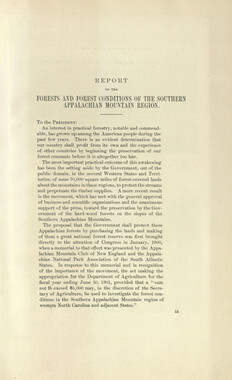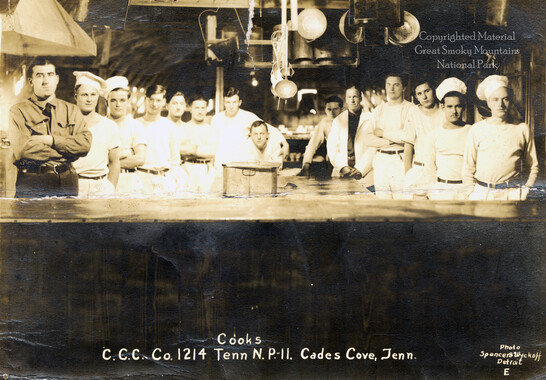Western Carolina University (21)
View all
- Canton Champion Fibre Company (2308)
- Cherokee Traditions (291)
- Civil War in Southern Appalachia (165)
- Craft Revival (1942)
- George Masa Collection (137)
- Great Smoky Mountains - A Park for America (2900)
- Highlights from Western Carolina University (422)
- Horace Kephart (941)
- Journeys Through Jackson (159)
- LGBTQIA+ Archive of Jackson County (85)
- Oral Histories of Western North Carolina (314)
- Picturing Appalachia (6797)
- Stories of Mountain Folk (413)
- Travel Western North Carolina (153)
- Western Carolina University Fine Art Museum Vitreograph Collection (129)
- Western Carolina University Herbarium (92)
- Western Carolina University: Making Memories (738)
- Western Carolina University Publications (2491)
- Western Carolina University Restricted Electronic Theses and Dissertations (146)
- Western North Carolina Regional Maps (71)
- World War II in Southern Appalachia (131)
University of North Carolina Asheville (6)
View all
- Allanstand Cottage Industries (62)
- Appalachian National Park Association (53)
- Bennett, Kelly, 1890-1974 (1463)
- Berry, Walter (76)
- Brasstown Carvers (40)
- Carver, George Washington, 1864?-1943 (26)
- Cathey, Joseph, 1803-1874 (1)
- Champion Fibre Company (233)
- Champion Paper and Fibre Company (297)
- Cherokee Indian Fair Association (16)
- Cherokee Language Program (22)
- Crowe, Amanda (40)
- Edmonston, Thomas Benton, 1842-1907 (7)
- Ensley, A. L. (Abraham Lincoln), 1865-1948 (275)
- Fromer, Irving Rhodes, 1913-1994 (70)
- George Butz (BFS 1907) (46)
- Goodrich, Frances Louisa (120)
- Grant, George Alexander, 1891-1964 (96)
- Heard, Marian Gladys (60)
- Kephart, Calvin, 1883-1969 (15)
- Kephart, Horace, 1862-1931 (313)
- Kephart, Laura, 1862-1954 (39)
- Laney, Gideon Thomas, 1889-1976 (439)
- Masa, George, 1881-1933 (61)
- McElhinney, William Julian, 1896-1953 (44)
- Niggli, Josephina, 1910-1983 (10)
- North Carolina Park Commission (105)
- Osborne, Kezia Stradley (9)
- Owens, Samuel Robert, 1918-1995 (11)
- Penland Weavers and Potters (36)
- Roberts, Vivienne (15)
- Roth, Albert, 1890-1974 (142)
- Schenck, Carl Alwin, 1868-1955 (1)
- Sherrill's Photography Studio (2565)
- Southern Highland Handicraft Guild (127)
- Southern Highlanders, Inc. (71)
- Stalcup, Jesse Bryson (46)
- Stearns, I. K. (213)
- Thompson, James Edward, 1880-1976 (226)
- United States. Indian Arts and Crafts Board (130)
- USFS (683)
- Vance, Zebulon Baird, 1830-1894 (1)
- Weaver, Zebulon, 1872-1948 (58)
- Western Carolina College (230)
- Western Carolina Teachers College (282)
- Western Carolina University (2008)
- Western Carolina University. Mountain Heritage Center (18)
- Whitman, Walt, 1819-1892 (10)
- Wilburn, Hiram Coleman, 1880-1967 (73)
- Williams, Isadora (3)
- Cain, Doreyl Ammons (0)
- Crittenden, Lorraine (0)
- Rhodes, Judy (0)
- Smith, Edward Clark (0)
- Appalachian Region, Southern (2929)
- Asheville (N.C.) (1944)
- Avery County (N.C.) (26)
- Blount County (Tenn.) (195)
- Buncombe County (N.C.) (1680)
- Cherokee County (N.C.) (283)
- Clay County (N.C.) (556)
- Graham County (N.C.) (238)
- Great Smoky Mountains National Park (N.C. and Tenn.) (525)
- Haywood County (N.C.) (3571)
- Henderson County (N.C.) (70)
- Jackson County (N.C.) (4917)
- Knox County (Tenn.) (35)
- Knoxville (Tenn.) (13)
- Lake Santeetlah (N.C.) (10)
- Macon County (N.C.) (420)
- Madison County (N.C.) (216)
- McDowell County (N.C.) (39)
- Mitchell County (N.C.) (135)
- Polk County (N.C.) (35)
- Qualla Boundary (982)
- Rutherford County (N.C.) (78)
- Swain County (N.C.) (2185)
- Transylvania County (N.C.) (270)
- Watauga County (N.C.) (12)
- Waynesville (N.C.) (86)
- Yancey County (N.C.) (72)
- Aerial Photographs (3)
- Aerial Views (60)
- Albums (books) (4)
- Articles (1)
- Artifacts (object Genre) (228)
- Bibliographies (1)
- Biography (general Genre) (2)
- Cards (information Artifacts) (38)
- Clippings (information Artifacts) (191)
- Copybooks (instructional Materials) (3)
- Crafts (art Genres) (622)
- Depictions (visual Works) (21)
- Design Drawings (1)
- Drawings (visual Works) (185)
- Envelopes (73)
- Exhibitions (events) (1)
- Facsimiles (reproductions) (1)
- Fiction (general Genre) (4)
- Financial Records (12)
- Fliers (printed Matter) (67)
- Glass Plate Negatives (381)
- Guidebooks (2)
- Internegatives (10)
- Interviews (815)
- Land Surveys (102)
- Letters (correspondence) (1013)
- Manuscripts (documents) (618)
- Maps (documents) (177)
- Memorandums (25)
- Minutes (administrative Records) (59)
- Negatives (photographs) (6090)
- Newsletters (1290)
- Newspapers (2)
- Notebooks (8)
- Occupation Currency (1)
- Paintings (visual Works) (1)
- Pen And Ink Drawings (1)
- Periodicals (193)
- Personal Narratives (10)
- Photographs (12976)
- Plans (maps) (1)
- Poetry (5)
- Portraits (4568)
- Postcards (329)
- Programs (documents) (181)
- Publications (documents) (2443)
- Questionnaires (65)
- Relief Prints (26)
- Sayings (literary Genre) (1)
- Scrapbooks (282)
- Sheet Music (2)
- Slides (photographs) (402)
- Songs (musical Compositions) (2)
- Sound Recordings (796)
- Specimens (92)
- Speeches (documents) (18)
- Tintypes (photographs) (8)
- Transcripts (322)
- Video Recordings (physical Artifacts) (23)
- Text Messages (0)
- A.L. Ensley Collection (275)
- Appalachian Industrial School Records (7)
- Appalachian National Park Association Records (336)
- Axley-Meroney Collection (2)
- Bayard Wootten Photograph Collection (20)
- Bethel Rural Community Organization Collection (7)
- Blumer Collection (5)
- C.W. Slagle Collection (20)
- Canton Area Historical Museum (2110)
- Carlos C. Campbell Collection (462)
- Cataloochee History Project (64)
- Cherokee Studies Collection (4)
- Daisy Dame Photograph Album (5)
- Daniel Boone VI Collection (1)
- Doris Ulmann Photograph Collection (112)
- Elizabeth H. Lasley Collection (1)
- Elizabeth Woolworth Szold Fleharty Collection (4)
- Frank Fry Collection (95)
- George Masa Collection (173)
- Gideon Laney Collection (452)
- Hazel Scarborough Collection (2)
- Hiram C. Wilburn Papers (28)
- Historic Photographs Collection (236)
- Horace Kephart Collection (861)
- Humbard Collection (33)
- Hunter and Weaver Families Collection (1)
- I. D. Blumenthal Collection (4)
- Isadora Williams Collection (4)
- Jesse Bryson Stalcup Collection (47)
- Jim Thompson Collection (224)
- John B. Battle Collection (7)
- John C. Campbell Folk School Records (80)
- John Parris Collection (6)
- Judaculla Rock project (2)
- Kelly Bennett Collection (1482)
- Love Family Papers (11)
- Major Wiley Parris Civil War Letters (3)
- Map Collection (12)
- McFee-Misemer Civil War Letters (34)
- Mountain Heritage Center Collection (4)
- Norburn - Robertson - Thomson Families Collection (44)
- Pauline Hood Collection (7)
- Pre-Guild Collection (2)
- Qualla Arts and Crafts Mutual Collection (12)
- R.A. Romanes Collection (681)
- Rosser H. Taylor Collection (1)
- Samuel Robert Owens Collection (94)
- Sara Madison Collection (144)
- Sherrill Studio Photo Collection (2558)
- Smoky Mountains Hiking Club Collection (616)
- Stories of Mountain Folk - Radio Programs (374)
- The Reporter, Western Carolina University (510)
- Venoy and Elizabeth Reed Collection (16)
- WCU Gender and Sexuality Oral History Project (32)
- WCU Mountain Heritage Center Oral Histories (25)
- WCU Oral History Collection - Mountain People, Mountain Lives (71)
- WCU Students Newspapers Collection (1923)
- Western North Carolina Tomorrow Black Oral History Project (69)
- William Williams Stringfield Collection (2)
- Zebulon Weaver Collection (109)
- African Americans (390)
- Appalachian Trail (35)
- Artisans (521)
- Cherokee art (84)
- Cherokee artists -- North Carolina (10)
- Cherokee language (21)
- Cherokee pottery (101)
- Cherokee women (208)
- Church buildings (190)
- Civilian Conservation Corps (U.S.) (111)
- College student newspapers and periodicals (2012)
- Dams (108)
- Dance (1023)
- Education (222)
- Floods (61)
- Folk music (1015)
- Forced removal, 1813-1903 (2)
- Forest conservation (220)
- Forests and forestry (1196)
- Gender nonconformity (4)
- Great Smoky Mountains National Park (N.C. and Tenn.) (181)
- Hunting (46)
- Landscape photography (25)
- Logging (119)
- Maps (83)
- Mines and mineral resources (9)
- North Carolina -- Maps (18)
- Paper industry (38)
- Postcards (255)
- Pottery (135)
- Railroad trains (72)
- Rural electrification -- North Carolina, Western (3)
- School integration -- Southern States (2)
- Segregation -- North Carolina, Western (5)
- Slavery (5)
- Sports (452)
- Storytelling (243)
- Waterfalls -- Great Smoky Mountains (N.C. and Tenn.) (66)
- Weaving -- Appalachian Region, Southern (280)
- Wood-carving -- Appalachian Region, Southern (328)
- World War, 1939-1945 (173)
Problems in the Smokies
Item
Item’s are ‘child’ level descriptions to ‘parent’ objects, (e.g. one page of a whole book).
-
-
/ thank you for sending me a copy of your bill (H.R. 10893) to provide for a National Park in the Great Smoky Mountains on the border of North Carolina and Tennessee. . . . [a] popular error regarding the Smokies, is the idea that they are too inaccessible for a popular resort. So they were until within the past year. And to that very isolation they owe what they have left of arboreal beauty and the charm of the unknown. But the admirable new system of state highways in North Carolina is now linking this region up with the outer world. This road [Highway 10], with its connections, gives access by automobiles from anywhere in the North, East or South. . . . A good road for motoring runs through the Cherokee Indian Reservation to Smokemont, nine miles from the crest of the Smoky divide, at the Indian or Collins Gap. It can easily be continued to the summit, and our State Highway Commission has already provided for such extension as soon as Tennessee agrees to meet us there. Another graded highway is now building to the top of the Smokies farther west, along or near the Little Tennessee River, and it will be completed under a similar agreement. When these two extensions are finished to the state line, it will be a comparatively simple matter to run a scenic highway of easy grades forty miles along the crest of the divide itself, connecting the two roads mentioned. Such a sky-line road would be a mile or more above sea level; and from it one could look out clear across the great Appalachian Valley to the Cumberland Mountains, nearly a hundred miles away, and similarly in other directions. . . .1 do not know any other location in eastern America that offers such an opportunity for continuous outlooks from motor cars along the very top of a majestic mountain range. The wonderful invigora- tion and spiritual uplift of such a trip can now be enjoyed by none but those hardy mountaineers who go afoot, packing their supplies for days on their own backs. In many of his published articles, Dad expanded on this concept of a sky-line drive: One of the members of the National Park Commission recently, told me, when he was here exploring the Smokies, that the federal government, if it took over the park, would have to build not less than three hard- surfaced highways about fifty feet wide, across the Smokies from the Carolina border to the Tennessee border, connecting with state roads on either side, in order to accommodate the millions of tourists who would flock here as soon as the park was opened. These would be linked together by a sky-line highway running along the very crest of the Smoky divide for forty miles. . . . This road would cross most of the capital peaks of the Smokies; Mt. Collins, Clingman Dome, Siler's Bald, Brier Knob, Thunderhead, Gregory Bald, and other lookout points from which the vistas are sublime. . . . Vast spaces lying between the roads would be only for human feet to wander in. Other places would be allotted to bridle-paths, of which there would be several hundred miles for horsemen. The reality of today falls far short of the road system Dad outlined. Only one of the three trans-park highways has been constructed, this one crossing the divide at Newfound Gap, about a mile east of Indian Gap. Construction of the other graded highway, that Dad told Congressman Wheeler "is now building," was halted following intensive pressure from well-organized conservation groups, and the agreement for its construction was nullified. The only existing semblance of the suggested sky-line drive is a seven- mile spur road, from Newfound Gap, which dead-ends near Clingman Dome. Dad's interest was not only in a road system for motor travel. He also recognized the needs of those who would hike and camp in the park—a need, in fact, much more to his own tastes. Returning to his letter to Congressman Wheeler, we find these comments: There is no danger that this region may ever become over-civilized to such a degree that those who enjoy the hardy sports of mountaineering and adventurous exploration will shun it. I have mentioned the Indian Gap as the eastern terminus of a projected sky-line road for tourists who wish to travel comfortably in their cars. They would turn to the left. But to the right of this same gap, going necessarily afoot, one soon comes to one of the most rugged and difficult mountain ranges of our continent. Along the divide eastward and northeastward toward Mt. Guyot the Smokies are exceedingly sharp-edge and steep. Here is a country for mountaineering enthusiasts who glory in matching their own wits and muscle against wild Nature and fighting her almost to the limit of human endurance. It will test their skill and stamina, and no chance will there be of their being overcrowded by touring folk. Here is a wild Eden that will always remain wild, unpeopled and unspoiled. It is today, as it has always been, an unknown land to all but a few athletic and daring adventurers who yearn for the explorer's thrill. I consider this "sawtooth range" one of the most singular and impressive advantages of the Smoky Mountain region. There is nothing like it east of the Rockies. Obviously, Dad did not foresee the tremendous influx of hikers and campers into this area. In the 1920s it would have taken a Jules Verne imagination to suggest that one can, today, leave Chicago or Boston in the morning, by plane, and be camping along a trail in the park that same evening. Or to believe that improved equipment, concentrated foods and changing social attitudes would now permit a teen-age girl to venture out on these back trails, with camp gear and food on her back sufficient for several days of camping. Or that the back country would be invaded by hordes of individuals whose love of nature is subordinated to their search for unrestricted but gregarious existence, as free as possible from the restraints of civilization. I am sure those early sponsors of the park would be far more surprised and outraged by conditions in the back country than by traffic jams on the highways. 30 AMERICAN FORESTS
Object
Object’s are ‘parent’ level descriptions to ‘children’ items, (e.g. a book with pages).
-
“Problems in the Smokies” is an article written by George S. Kephart, son of Horace Kephart, in a 1977 issue of American Forests. In it, the younger Kephart details what he sees as problems in park management, including issues like traffic jams. Responses to the article, most notably by current park superintendent, argue that the article is misinformed. Horace Kephart (1862-1931) was a noted naturalist, woodsman, journalist, and author and promoter of the Great Smoky Mountains National Park.
-
